- Info
Detecting crack-like defects in gas pipelines
EMAT crack detection and coating disbondment (RoCD2)
Traditionally, natural gas has been limited in its utilization due to factors such as its location far from a market and the existing preference for oil based energy policies and infrastructure. Today, natural gas is no longer as stranded as it once was and has quickly become a viable energy alternative. Worldwide consumption in natural gas is expected to lead all other energy sources in the next 20 years with a projected 70 % increase (International Energy Outlook 2004 (IEO2004)). However, distribution continues to be a concern as demand exceeds production in areas with declining production capabilities particularly in the US and Europe. To counter this imbalance, several strategies are being pursed that affects the pipeline infrastructure. The first is simply that new and existing pipelines are being built or enhanced to bring gas from greater distances. Second is to use LPG based transportation whereby local distribution networks will need to be built or expanded. Finally, the potential for a hydrogen based fuel economy in the future would require additional pipelines to be built. Regardless of the strategy, the gas pipeline network will expand placing greater demand on operators to ensure any integrity threats to these pipeline systems are accurately and reliably identified.
What are the main integrity threats to a gas pipeline? There are many such as third-party damage, external corrosion and pipeline cracking. The third option is of particular interest given the difficulty in locating cracks and the compressibility of the gas content. The combination of which can result in the violent decompression of the gas in the event of a failure. Clearly an effective in-line inspection technique for detecting cracks is required.
Today the most common method used for inline pipeline inspection is Magnetic Flux Leakage (MFL) technology. The reliability and robustness of this technique continues to be the foundation for determining pipeline integrity. Nevertheless, there exists a certain limitation when using MFL techniques. Primarily, MFL is limited to detecting defects where material loss has occurred or a feature has an open discontinuous structure. Therefore, thin axial cracks and Stress Corrosion Cracking (SCC) with a narrow or closed structure have proved elusive in the past to adequate and reliable NDT based detection (Figure 1).
A second alternative is to use Hydrostatic Testing techniques. This approach has been the early foundation in the pipeline industry to ensure pipeline integrity. However, some limitations exist in its use particularly in the case of operational pipelines. The primary concern is the cost of such technique through the loss of production due to having to fill the pipeline with water to be pressurized. In addition, a cost is incurred in having to deal with the environmental considerations of the waste water once the test is complete. Finally, care must be taken in the testing procedure to not enlarge flaws not exposed by the test. The process can be difficult and costly.
Given the structural nature of pipeline cracks, an ultrasonic based inspection technique is the best detection method to use. Traditional ultrasonic technologies (UT) based on piezoelectric transducers are only applicable when an adequate liquid couplant is available between the transducer itself and the pipe wall. Therefore, only liquid systems can be used.
Electro-Magnetic Acoustic Transducer technology is based on electro-mechanical conversion produced when an eddy current is applied within a static magnetic field. The resulting Lorentz forces and magnetostriction result in an interaction between the EMAT and the metal surface generating an acoustic wave within the material (Figure 2). The material being inspected is its own transducer, eliminating the need for liquid couplant. The acoustic wave that propagates within the pipe wall is dependent on the dimensions and properties of the pipe material. Therefore, the presence of SCC and other crack features will disturb the guided-wave in such a way as to produce a reflection resulting in an echo. This echo can be detected and measured.
ROSEN’s high-resolution RoCD2 tool provides such an approach. This tool service is based on a unique and highly effective implementation of an EMAT to induce guided acoustic waves within the pipe wall regardless of the pipeline contents. The result is a high quality and reliable signal precisely controlled in wave length and frequency (< 1 Mhz) limiting detection to cracks and crack colonies and minimizing detection of other intrinsic anomalies of the pipeline. In addition, the technique is used to collect coating disbondment information. Detecting these areas is important since SCC tends to occur in areas where the coating has disbonded. Together these results provide a proactive approach to help improve the overall integrity of a pipeline.
ROSEN’s design provides a distinct advantage through its high quality permanent magnets and careful utilization of the particular guided-wave frequency. Pipe wall inclusions or other manufactured defects detection is significantly minimized improving the reliability of crack POD. In addition, the design is different from other systems, as the magnetic source is external to the sensor, resolving wear or ferromagnetic debris obstruction problems.
A 16" EMAT Crack Detection and Coating Dispondment tool (RoCD2) for oil and gas pipelines has recently been released (Figure 3). The innovative technology has proven its performance during extensive in-house pulltests on samples containing natural intergranular SCC colonies. The first survey recently took place and contained 72 sensor channels that monitor for cracks and coating disbondment of a pipeline. The results obtained with the EMAT inspection technology can be combined either with other in-line inspection results or other field activities by using the ROSOFT data management suite. The ability to accurately and reliably assess gas pipeline integrity threats is fast approaching.
More News and Articles

Die Entwässerungssysteme unserer Städte sind ein wesentlicher Bestandteil des kommunalen Anlagevermögens. Die große Zukunftsaufgabe, …

Die Entwässerungssysteme unserer Städte sind ein wesentlicher Bestandteil des kommunalen Anlagevermögens. Die große Zukunftsaufgabe, …

Die Entwässerungssysteme unserer Städte sind ein wesentlicher Bestandteil des kommunalen Anlagevermögens. Die große Zukunftsaufgabe, vor der viele Kommunen …
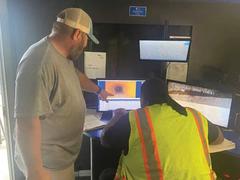
ITpipes announced it has secured $20 million in equity financing from Trilogy Search Partners and Miramar Equity Partners.
Known for its trusted and user-friendly platform, ITpipes …

With deep sadness we announce the loss of our founder and partner Prof Dr Dietrich Stein at the age of 85.
Engineers around the globe are thankful for his dedication to the inventions in the fields of sewers, …
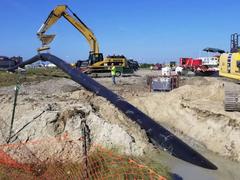
PPI’s MAB-11-2024 Covers HDPE Water Pipelines Up to 60-in. Diameter and 10,000-ft Long Pulls
Developed by the Municipal Advisory Board (MAB) – and published with the help of the members of the …
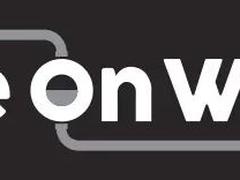
Mass deployment of connected leak loggers is being made possible by the latest technology, writes Tony Gwynne, global leakage solutions director, Ovarro
Water companies in England and Wales are …

The innovative customer service platform Kraken has made a successful transfer from energy to water. Ahead of their presentation at UKWIR’s annual conference, Portsmouth Water chief executive …

Researchers at Eawag and the Swiss Data Science Center have trained AI algorithms with a comprehensive ecotoxicological dataset. Now their machine learning models can predict how toxic chemicals are …

Pipe renewal in Brazil
How do you stop water loss through leaks in old pipe systems without major environmental impacts and restrictions? The answer: with trenchless technology, or more precisely …
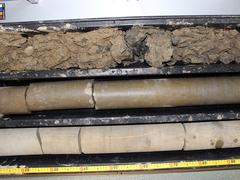
In a recently launched project, the aquatic research institute Eawag is investigating how the use of borehole thermal energy storage (BTES) affects the surrounding soil, the groundwater …
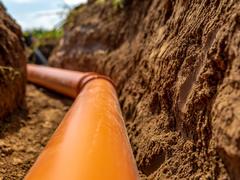
Watercare has successfully finished the final connection on the East Coast Bays link sewer at Windsor Park in New Zealand.
Much of the East Coast Bays sewer link was installed using horizontal directional …


